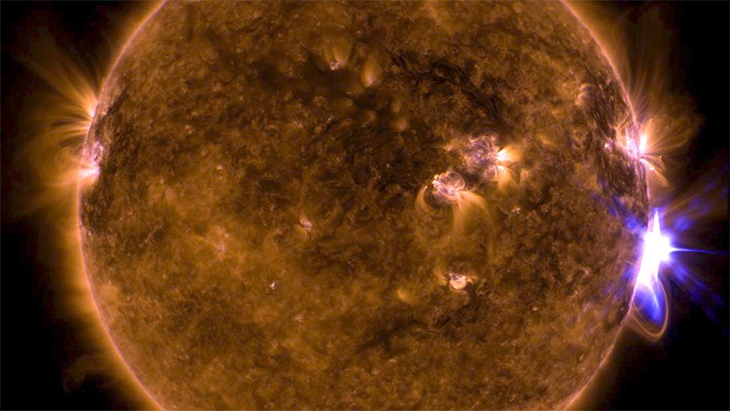By: Jonathan O’Callaghan/IFL Science A team of scientists has found evidence for an unusual particle that, bizarrely, is also its own antiparticle. It was first theorized 80 years ago but now looks like it might be a reality.
The findings, published in the journal Science, were conducted by scientists from Stanford University in California and the University of California.
The idea of a particle having its own antiparticle goes back to 1937 when Italian physicist Ettore Majorana (who mysteriously disappeared in 1938) first postulated the theory. He said that within the class of fermions, which include protons, electrons, and neutrons, some particles should have their own antiparticles, which became known as Majorana particles.
An antiparticle is a particle that has the same mass as the regular particle, but an opposite electric or magnetic property. For example, the electron’s antiparticle is the positron. If the two encounter each other, they annihilate each other.
In this research, the team stacked thin films of two quantum materials together and sent an electrical current through them in a chilled vacuum chamber. The top film was a superconductor, and the bottom one was a magnetic topological insulator.
By sweeping a magnet over the stack, the team was then able to modify the speed of electrons. At certain points, this caused what appeared to be Majorana quasiparticles to emerge in pairs along with electrons. One was always deflected away so that the flow of the individual quasiparticles could be measured.
To clarify, though, the researchers note they didn’t exactly see Majorana particles. Rather, they saw what were “essentially excitations in a material that behaves like Majorana particles,” according to Stanford physics Professor Giorgio Gratta in a statement.
Just as confusingly, it’s not clear if these particles can actually occur naturally. “It’s very unlikely that they occur out in the universe, although who are we to say?” added Gratta. The particular type of Majorana quasiparticle they think they’ve found is called a “chiral” fermion, which moves along a one-dimensional path in one direction.
So, instead, the researchers are referring to this as “smoking gun” evidence of Majorana particles. It was already thought that neutrinos might be their own antiparticles, although separate research is continuing to find out if that’s the case.
“Our team predicted exactly where to find the Majorana fermion and what to look for as it’s ‘smoking gun’ experimental signature,” said Stanford professor Shoucheng Zhan, a senior author on the paper. “This discovery concludes one of the most intensive searches in fundamental physics, which spanned exactly 80 years.”




